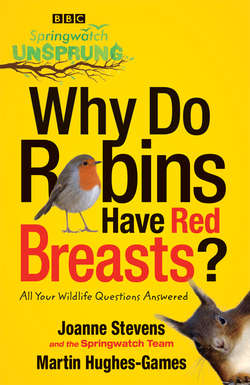Читать книгу Springwatch Unsprung: Why Do Robins Have Red Breasts? - Jo Stevens - Страница 14
Family Affair
ОглавлениеDo fox families contain youngsters from different years in the same den? If so, do the older cubs play any part in rearing their younger siblings? Alan
Foxes are usually seen alone but they don’t lead solitary lives. Most fox families consist of an adult male and female plus their cubs. When the cubs are born they are just 10–14 centimetres long, blind and helpless. They’re completely dependent on their mother for milk and warmth as they cannot regulate their own temperature. She will stay with them around the clock for the first couple of weeks. During this time, the male will bring her food but sometimes the family will be assisted by other adult helpers too, usually vixens. These helpers often don’t breed, and when the mother returns to hunting duties they will also help to look after the cubs – groom them, play with them and bring food to the den.
These helpers are often daughters from previous years, but they could also be the main vixen’s sisters or even her mother once she has passed breeding age. About one in three fox families has one or more non-breeding vixen helping out, and there’s usually a hierarchy so that only the alpha female gives birth. Studies have shown that helpers don’t necessarily increase the cubs’ chances of survival but they do take the pressure off the parents, which don’t have to work so hard to feed the cubs.
So what’s in it for the helpers, when they could be raising cubs of their own? It may be a case of ‘kin selection’, a strategy that means sometimes it’s better to help raise a relative’s young even at a cost to the individual. When the time comes for a fully-grown cub to disperse, it has to weigh up the costs and benefits of staying against the risks of leaving home. If it stays, the cub may not breed for a year or two but it might inherit the territory. By leaving home the cub may have young of its own by next spring but it must find its own territory first. Mortality can be high for dispersing cubs so it is a difficult choice for them to make.
Choosing to stay at home doesn’t always mean that a fox won’t get the chance to breed, though. In 2012, Springwatch followed a fox family that had a mammoth litter of eleven cubs living under a garden shed in Potter’s Bar. Most litters only have four to six cubs so this was unusual. After watching the family closely for several weeks it became apparent that there were actually two adult females, one dominant and one subordinate, and both appeared to suckle the young. It seems that both vixens were mothers and they had pooled their litters to raise them cooperatively.
